Hunting down Caravaggio's paintings

A big part of me doesn’t know how to begin this, partly because I’m concerned I’ll end up sounding cliché/cringe…but having said that, I have to begin somewhere. Side note: thanks to Riva on Twitter for giving me the idea to write this article (inspired by her piece on Nietzsche).
There’s certain artists whose works immediately strike me, and I develop an infatuation with their paintings. Caravaggio is one of those artists. A Baroque painter from 16th-century Italy, his most notable works are primarily Biblical in theme (three being from the Old Testament). If you have even a passing interest in art, I’d wager to say you’ve seen some of his paintings.
But as far as I can remember, he’s been one of my favourite painters, ever. There are others on that list (Jacques-Louis David and William-Adolphe Bouguereau, for example), but each time I look at a Caravaggio painting, there is something so striking and moving that it looks like a still from a movie, and I want to immerse myself in that world.
I’m not sure when I thought of the idea, “How about I travel to places solely to view works of art by my favourite painters?” I mean, Italy has it all, so you’re bound to come across something you want to see. For me, it happened to include Caravaggio, along with the entirety of Ancient Rome. But even if the latter two didn’t exist, I would have still gone for the paintings alone.
So in 2017, when my then-partner suggested we go on a holiday, I knew one destination had to be Italy, and I knew I had to go out of my way to see as many of his paintings as possible. Planning the trip, we decided to go to Valletta, the capital of Malta. Again, I knew one of his paintings was located in St. John’s Co-Cathedral, the city’s main church, so I firmly set this as another destination.
Most of Caravaggio’s paintings are in Rome. The best location to see them is where they were originally intended to be. The church of San Luigi dei Francesi, or the Church of St. Louis of the French (built for the French community in the 1500s) houses three paintings in the Contarelli Chapel. He painted them specifically to be housed in this church, and as an added bonus, Frédéric Bastiat is buried inside the same church (which happens to be very close to the Pantheon). You can see the exterior of the church below.

Inside the Contarelli Chapel, there are three massive paintings: The Calling of Saint Matthew, The Inspiration of Saint Matthew, and The Martyrdom of Saint Matthew. You can see the first two in the photo below:

As I navigated the crowds to get the best view (fortunately, I'm taller than most people), I carefully absorbed the imagery, trying to be "in the moment" as much as I could (without consciously thinking of the notion), and merely admiring the masterpieces of my favourite painter. I love all three paintings, but my favourite is The Calling of Saint Matthew. It is a moving scene that begins on the left with the various characters, and directs your gaze to a tall, slender Christ pointing to Matthew using a movement of the hand suggesting Michelangelo's The Creation of Adam (okay, that last line is from a book on his paintings I bought inside the church).
The same book has a beautiful description about this painting:
"In a tavern, where men are playing dice, Christ suddenly appears with a ray of light (grace) from an unseen window, where Matthew hesitates, while various light fragments extract other figures from the shadows. With psychological assertiveness and with rich Venetian colors, Caravaggio describes the world of those who are either not called upon or remain indifferent to grace."
The only decent photos I could take of the Calling of Saint Matthew and the Martyrdom of Saint Matthew has them at an awkward angle. Regardless, there's plenty of perfect examples online if you would like to seek them out.


Inside the church, there's a table with books and postcards about Caravaggio, and the book I bought and just referenced is below. It covers his most well known paintings, and has some great descriptions about them, including historical and Biblical context.

Elsewhere inside the church, you'll find more examples of beautiful art, architecture, and everything else that makes churches from past eras a joyful experience.

Next on the list was to visit the Barberini Corsini National Gallery (or National Gallery of Ancient Art), originally a palace from the 1700s, now a museum housing incredible art and sculptures from the 13th to the 18th century. A trip to Rome makes this venue mandatory to visit. If you're not staring up at the frescoes decorating the ceilings, then you'll be captured by the endless display of pure beauty that adorns the walls.
The museum was supposed to house two Caravaggio paintings at the time, however it only had one (Narcissus). Incidentally, my favourite Caravaggio painting was the one that wasn't there: Judith Beheading Holofernes. Disappointment aside, there was more than enough art for me to experience. The two notable mentions go to Caravaggio's Narcissus, and Raphael's La Fornarina.


There were a few other locations to admire more Caravaggio paintings (see this link for the full collection) but I knew I couldn’t get to it all, and with so much else to see in Rome, his other paintings were relegated to a future second trip I'll have to make again.
The next city was Naples (only for a day), and I was faced with the decision to see more Caravaggio paintings (there’s 3 in the city) or visit Pompeii. Ultimately, this meant that my past-teenage obsessed self with ancient history won out, and the ruins of Pompeii were explored for half a day, whilst the other half was visiting the Naples Archaeological Museum. I cannot recommend going to the museum enough if you're ever in Naples. If you love history in all its breadth, especially one so preserved as what the museum offers, then this will be an experience you want to have. Most of the artifacts are from Pompeii and some from Herculaneum.
I’m getting carried away, so maybe the Naples Archaeological Museum is for another article. Side note: Naples is a grungy city, but I found it charming and unique. There's an assortment of architecture and buildings, see the photo below for an example. It shows the Porta Nolana, a remnant of one of the medieval city gates.
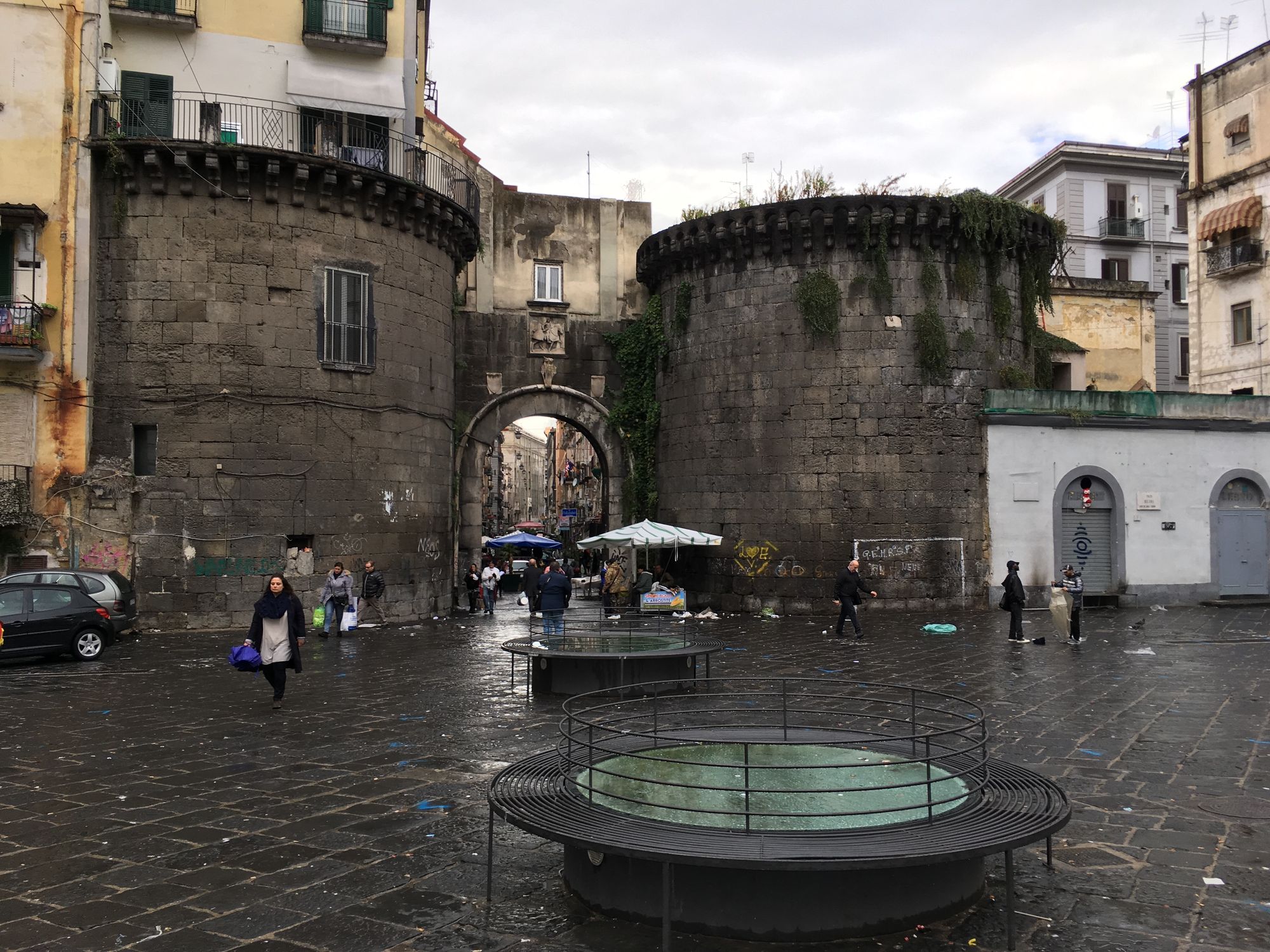
The next destination was Valletta, the capital of Malta. The city is one of impeccable beauty, with the overall architecture being Baroque in character, the winding streets are lined with ornate buildings. In the centre of the city, as you walk towards St. John's Square, you will see St. John's Co-Cathedral, an austere looking church built in the 1500s by the Order of St. John. Inside however, you are immediately exposed to the sort of opulence typical of Baroque architecture.
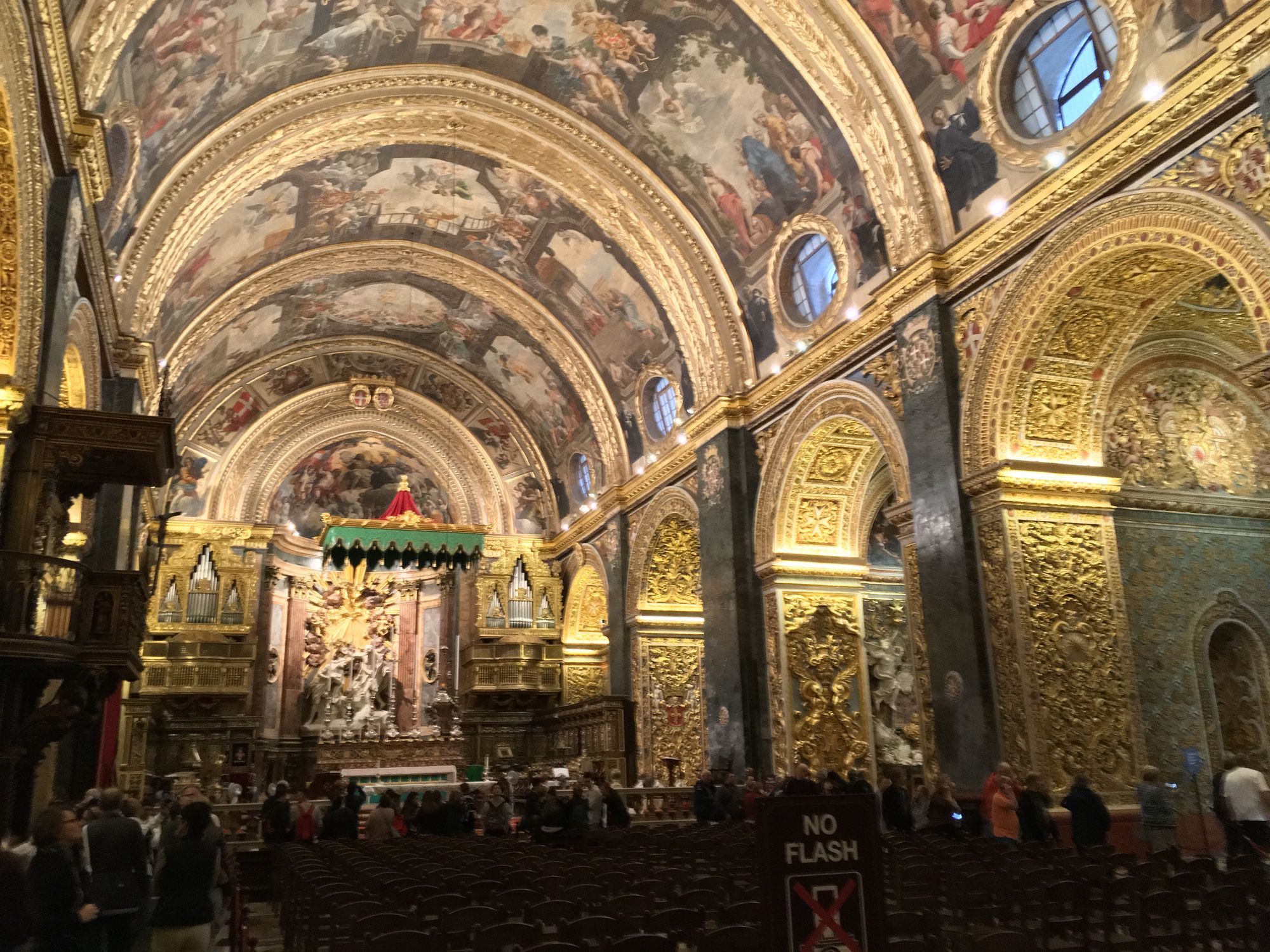
In the early 1600s Caravaggio moves to Malta (long story short: he becomes a fugitive, fleeing Rome for Naples, then Malta), where he is commissioned by the Knights of Malta to paint what would become his magnum opus: The Beheading of John the Baptist. It's his largest painting, measuring 361 x 520 cm, and he painted it specifically for it to be housed in St. John's Co-Cathedral. It's beautiful and moving, and a photo doesn't do it justice, but I'll share the one I took anyway.

It's located in the oratory of the church, with the usual beautiful decorations. To quote a passage from the Caravaggio book I bought:
Holy, personal, and human stories fully coincide. The image presents a tragic view of the world, sparing neither artist nor saint and appearing upon the canvas with utterly skillful expressiveness...here, it is Caravaggio's poetic inspiration which gives its voice to innocent pain and the righteous who have suffered martyrdom through human injustice everywhere.
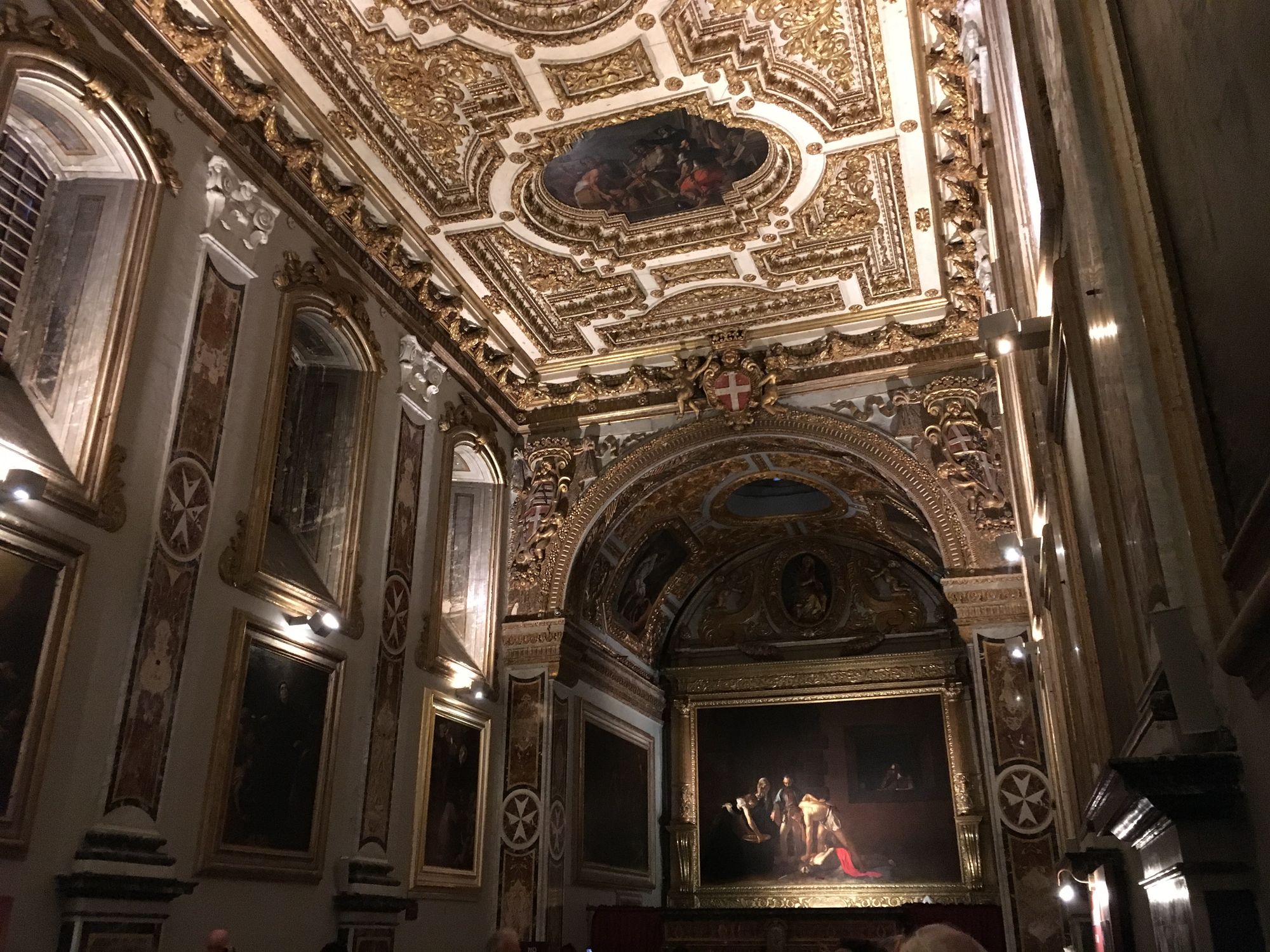
In the same oratory, another Caravaggio painting is on display, perhaps overlooked and not as significant as his others, Saint Jerome Writing is worth observing.
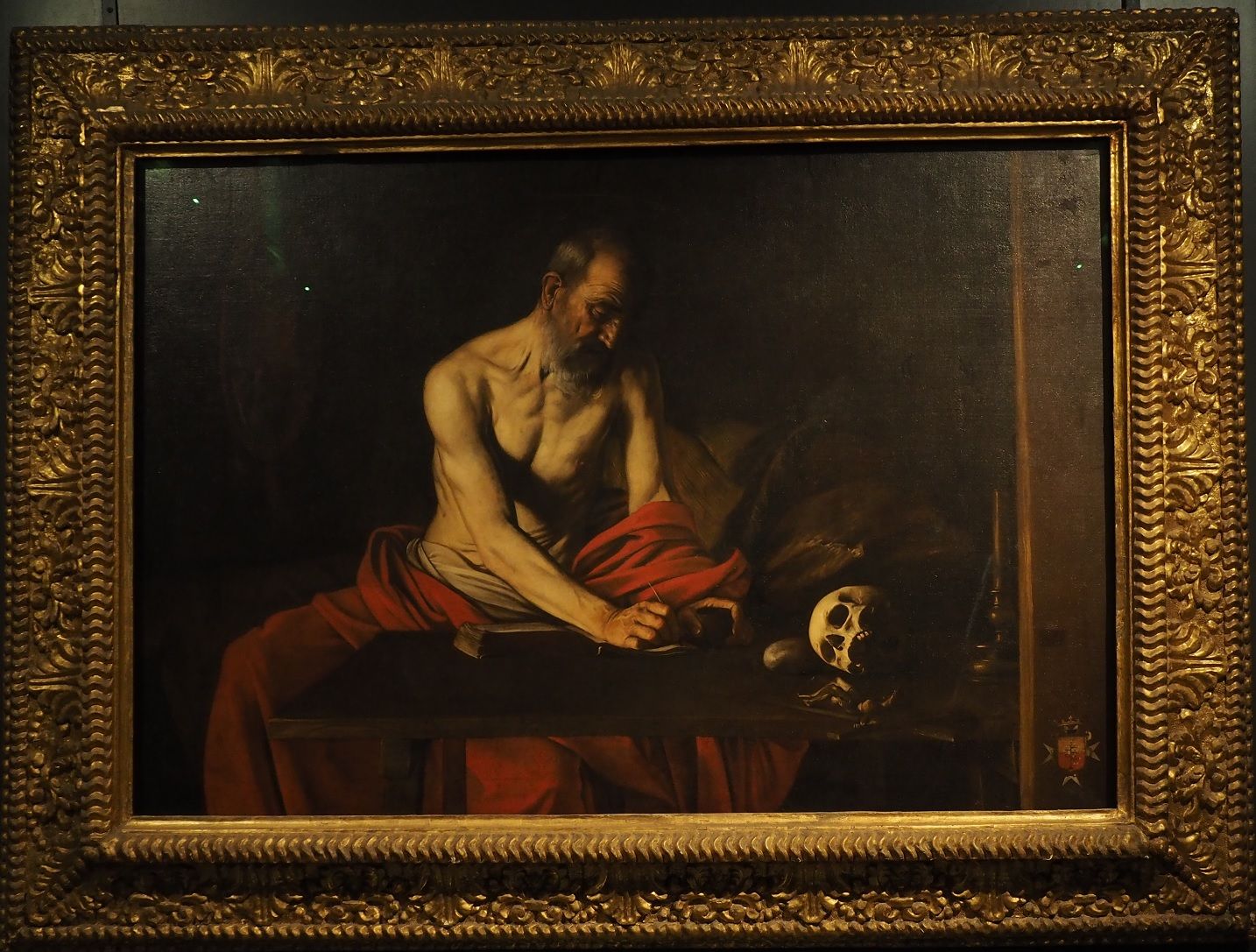
I could go on, but I've already had to cut back this article, and I could easily keep writing/talking. However, I will make two more mentions of his paintings. In 2021 there was an exhibition from The Met in my city, and to my extreme excitement and pleasure, a Caravaggio painting was in the collection! The Musicians (late 1500s) is probably my second favourite painting of his, because for some reason it feels so alluring. I don't know how he managed it, but the facial expressions somehow capture that almost careless, youthful look one has at a certain point in their life, where you might have a singular pursuit and are not phased with anything else. The two musicians staring at us seem to be caught in the moment of a sense of joy or ecstasy; it's difficult to convey.

The second painting is the Denial of Saint Peter, early 1600s. I managed to see this at The Met last year (along with countless other art work), unexpectedly, so it was a nice feeling to see it from a distance, and recognise the style being very familiar.
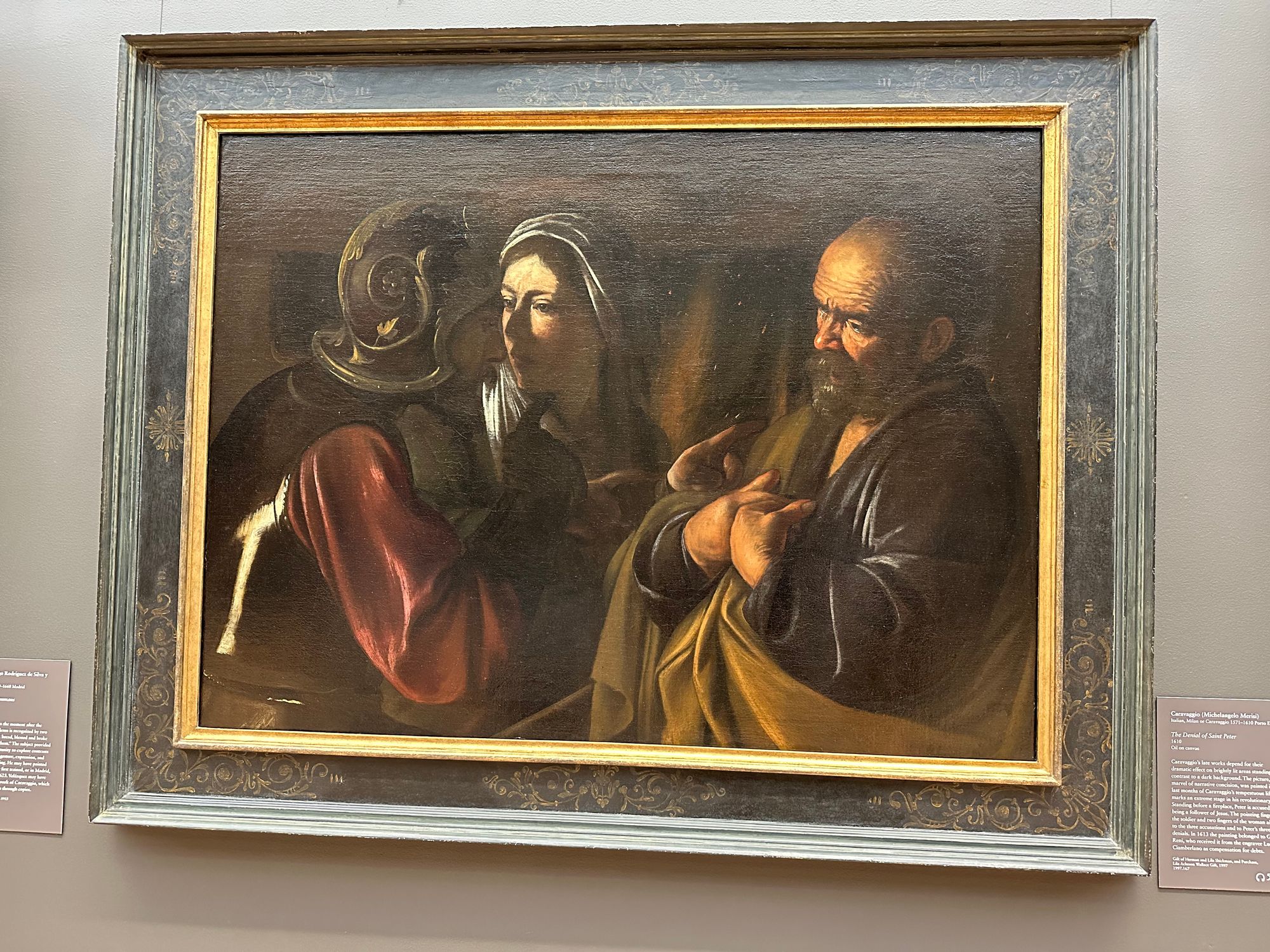
My journey admiring Caravaggio and his paintings ends here for now. There's more I wish I could say or talk about, but this isn't the article for it, and I've been writing this for a few weeks that I feel content enough to finish it now. Thanks for reading if you got this far!